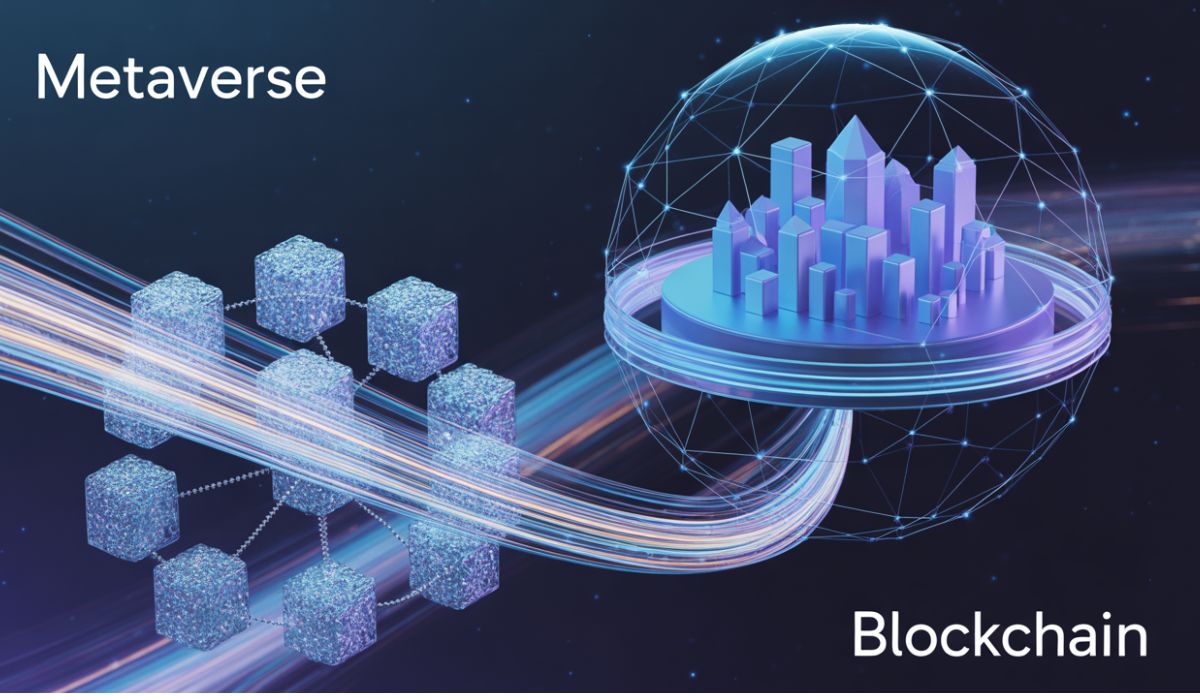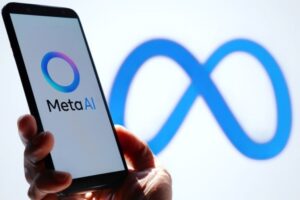Exploring the Metaverse and Blockchain: Building the Future of Web3

The Interplay of metaverse and Blockchain: Paving the Way for Web3
In 2025, the digital landscape is undergoing a significant transformation, with the metaverse and blockchain emerging as pivotal elements of this evolution. These components are integral to Web3, the forthcoming iteration of the internet. This article delves into the intricate relationship between these two technologies, illustrating how they collaborate to foster a more open and decentralized digital future.
- Exploring the metaverse and Blockchain
- The metaverse: A New Digital Frontier
- Blockchain: The Backbone of Digital Security
- The Synergy Between metaverse and Blockchain
- Digital Ownership: Empowering Users
- Secure Transactions: Building Trust
- Decentralization: Empowering Creators
- Interoperability: Seamless Experiences
- The Emergence of a Decentralized Internet
- User Empowerment: Control Over Digital Identities
- New Economic Models: Redefining Value
- Innovation and Interoperability: A Unified Ecosystem
- Market Trends and Future Outlook
- A Collaborative Vision for Web3
- Frequently Asked Questions
Exploring the metaverse and Blockchain
The metaverse: A New Digital Frontier
The metaverse represents a collective virtual environment where the boundaries between the physical and digital realms blur. It encompasses immersive experiences through virtual worlds, augmented reality (AR), and the internet, creating a continuous and interactive ecosystem. Picture a future where the internet transcends basic websites, evolving into vibrant digital universes where users can own virtual properties, participate in events, and even establish their own economies.
Blockchain: The Backbone of Digital Security
Blockchain technology functions as a secure, decentralized digital ledger that records transactions across multiple computers, ensuring that once data is entered, it cannot be altered. Its decentralized nature, combined with transparency and resistance to tampering, makes blockchain crucial for developing secure systems that operate without intermediaries. While it is widely recognized for facilitating cryptocurrencies like Bitcoin and Ethereum, blockchain also underpins smart contracts, digital assets, and decentralized applications (dApps), all of which are vital components of the Web3 ecosystem.
The Synergy Between metaverse and Blockchain
The metaverse and blockchain are intricately linked, with blockchain providing the essential framework that ensures the metaverse is decentralized, secure, and user-centric. Here’s how they complement each other:
Digital Ownership: Empowering Users
Blockchain enables the creation of non-fungible tokens (NFTs), which represent unique digital assets such as virtual land, artwork, or avatars within the metaverse. NFTs authenticate ownership of these digital items, allowing users to buy, sell, or trade them with confidence. Platforms like Decentraland and The Sandbox leverage Ethereum’s blockchain to facilitate NFT transactions for virtual real estate, ensuring secure and straightforward ownership transfers.
Secure Transactions: Building Trust
In the metaverse, users engage in buying and selling digital goods, from virtual clothing to event tickets. Blockchain’s robust security features ensure that these transactions are transparent, immutable, and free from the need for intermediaries. This fosters trust among users and minimizes the risk of fraud, which is particularly crucial when real money is involved.
Decentralization: Empowering Creators
Unlike conventional platforms controlled by corporations, the metaverse thrives on decentralization. Blockchain eliminates the necessity for a central authority, granting users and creators greater autonomy. This aligns seamlessly with Web3’s vision of empowering individuals and enhancing user agency.
Interoperability: Seamless Experiences
The metaverse comprises various platforms and virtual worlds, necessitating smooth transitions between them for users. Blockchain standards, such as ERC-721 for NFTs, establish common protocols for creating, owning, and trading assets, thereby fostering a cohesive virtual ecosystem.
In essence, blockchain serves as the foundational layer for the metaverse, akin to how the internet underpins the World Wide Web, providing security, genuine ownership, and decentralization.
The Emergence of a Decentralized Internet
Web3 signifies a monumental shift from the centralized internet (Web2) to a decentralized network owned by its users. The metaverse and blockchain are crucial drivers of this transformation, working in tandem to realize the vision of Web3:
User Empowerment: Control Over Digital Identities
Web3 empowers users to manage their own data and digital identities. Blockchain facilitates secure, decentralized data storage, while the metaverse offers a platform for self-expression and monetization of creativity. Users can genuinely own their avatars and digital assets, thanks to blockchain technology.
New Economic Models: Redefining Value
The metaverse, underpinned by blockchain, fosters virtual economies where individuals can earn, spend, and invest in digital assets that hold real-world significance. This contrasts sharply with Web2 platforms like Facebook and Google, which often exert control over user-generated content and data. In crypto metaverses, owners of virtual land or tokens can trade them on decentralized exchanges, transforming their digital assets into valuable investments.
Innovation and Interoperability: A Unified Ecosystem
Blockchain’s decentralized framework encourages developers to create applications free from censorship or central oversight. Concurrently, the metaverse integrates diverse virtual worlds into a cohesive environment. This aligns with Web3’s objective of establishing a borderless, interconnected internet where users can navigate seamlessly across platforms.
Together, the metaverse and blockchain are shaping a future where users enjoy enhanced autonomy, innovative earning opportunities, and a more open, creative digital landscape.
Market Trends and Future Outlook
The metaverse market is poised for explosive growth, potentially reaching hundreds of billions of dollars by 2027. Blockchain technology is instrumental in this expansion. In 2025, several trends are emerging, including utility-driven NFTs that provide tangible value, widespread blockchain adoption in gaming, and a strong emphasis on sustainability through platforms like Solana and Polygon. These trends underscore the critical partnership between the metaverse and blockchain in crafting a scalable, user-centric Web3 future.
A Collaborative Vision for Web3
The relationship between the metaverse and blockchain transcends mere technology; it embodies a transformative mindset. Both are steering us toward a more open, decentralized, and user-oriented internet. As we progress through 2025 and beyond, the metaverse, built on blockchain, promises a realm where creativity, ownership, and community can thrive, unencumbered by centralized powers.
This dynamic alliance is not only shaping Web3 but also revolutionizing our online interactions, creativity, and commerce, paving the way for a truly decentralized virtual world accessible to all.
Frequently Asked Questions
-
What connects the metaverse and blockchain?
Blockchain provides the metaverse with secure digital ownership, transparent transactions, and decentralization, enabling a user-centric vision for Web3. -
How does blockchain enhance the metaverse?
It secures NFTs for virtual assets, ensures safe transactions, and removes central control, fostering a trustless virtual economy. -
What is the significance of NFTs in the metaverse?
NFTs, enabled by blockchain, signify unique digital items such as virtual land or avatars, ensuring verifiable ownership. -
Why is decentralization vital for the metaverse?
Decentralization, facilitated by blockchain, grants users control over their assets and data, contrasting with centralized platforms like Meta. -
How do the metaverse and blockchain contribute to Web3?
They create a decentralized internet where users possess their digital identities and assets, promoting new economic models.







